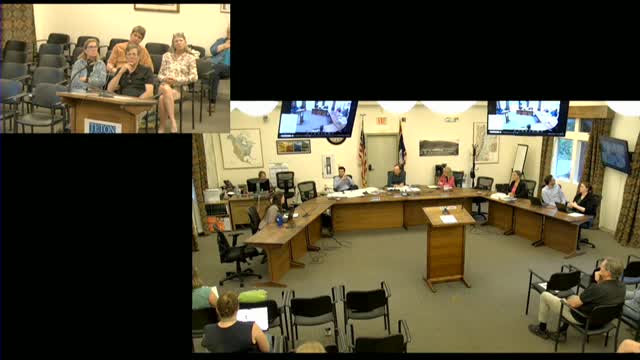Wildlife advocates demand urgent action to protect moose habitat
June 10, 2024 | Teton County, Wyoming

This article was created by AI summarizing key points discussed. AI makes mistakes, so for full details and context, please refer to the video of the full meeting. Please report any errors so we can fix them. Report an error »

In a recent government meeting, key discussions centered around wildlife preservation and the impact of development on local habitats, particularly in the Greater Yellowstone Ecosystem. Janney Fitzgerald, Executive Director of the Conservation Alliance, emphasized the urgent need to protect crucial wildlife corridors, specifically the Snake River corridor, which is vital for the declining moose population. Fitzgerald highlighted community support for wildlife safety, urging officials to prioritize these concerns over potential inconveniences to residents.
Commissioner Lawrie echoed Fitzgerald's sentiments, advocating for a field trip to North Fish Creek Road to better understand the implications of development on wildlife. Lawrie expressed concern over past mistakes that have negatively affected local wildlife and stressed the importance of learning from these experiences.
The meeting also addressed the proposed transit center, with several commissioners questioning its size and the potential impact on wildlife. Commissioner Maramsa raised concerns about the necessity of a 29,100 square-foot building, suggesting that a smaller structure could allow for more parking and a wider wildlife buffer. Other commissioners expressed discomfort with the current plan, particularly regarding lighting and paved parking, arguing that the health of the moose population should take precedence over parking space availability.
The discussion highlighted a broader community commitment to wildlife preservation, with commissioners acknowledging the need for creative solutions that balance development with ecological concerns. The meeting concluded with a call for further consideration of wildlife-friendly practices in future planning efforts, reflecting a strong community desire to protect local ecosystems amidst ongoing development pressures.
Commissioner Lawrie echoed Fitzgerald's sentiments, advocating for a field trip to North Fish Creek Road to better understand the implications of development on wildlife. Lawrie expressed concern over past mistakes that have negatively affected local wildlife and stressed the importance of learning from these experiences.
The meeting also addressed the proposed transit center, with several commissioners questioning its size and the potential impact on wildlife. Commissioner Maramsa raised concerns about the necessity of a 29,100 square-foot building, suggesting that a smaller structure could allow for more parking and a wider wildlife buffer. Other commissioners expressed discomfort with the current plan, particularly regarding lighting and paved parking, arguing that the health of the moose population should take precedence over parking space availability.
The discussion highlighted a broader community commitment to wildlife preservation, with commissioners acknowledging the need for creative solutions that balance development with ecological concerns. The meeting concluded with a call for further consideration of wildlife-friendly practices in future planning efforts, reflecting a strong community desire to protect local ecosystems amidst ongoing development pressures.
View full meeting
This article is based on a recent meeting—watch the full video and explore the complete transcript for deeper insights into the discussion.
View full meeting